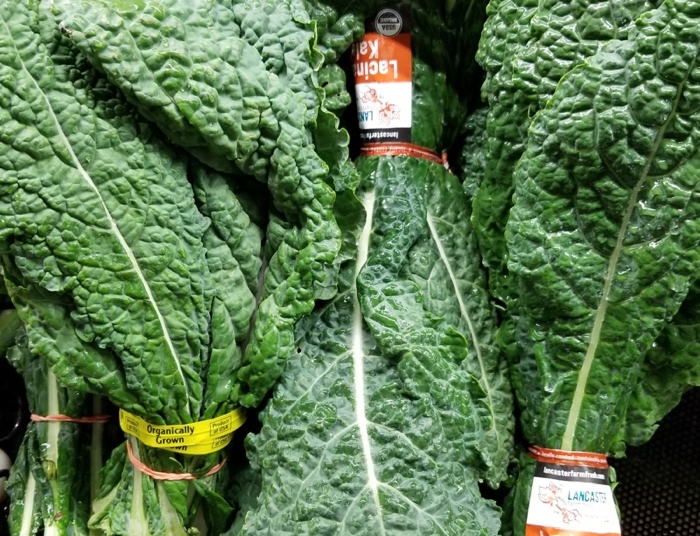Hail to Kale!
Kale is a superfood that’s king when it comes to nutrition. It contains a hit parade of vitamins and minerals that would make any other veggie blush. A cup of raw kale packs a whopping 684% daily value (DV) of Vitamin K, 206% DV of Vitamin A and 134% DV of Vitamin C. It also contains a respectable percentage of B vitamins and iron. We like to feature lacinato kale and the common curly type.
Kale has deep, ancient roots in the Brassica family, a more bitter-tasting ancestor of Brussels sprouts, broccoli, cauliflower and kohlrabi. Kale can be curly, flat, a bit biting or nutty-sweet, depending on the variety. Its hue ranges from bright or dark green to red and even black.
Although there are many different varieties of kale, the most popular ones are the Lacinato kale and the green and red curly kale. And they’re all here for the taking at Martindale’s! Read on to learn the similarities and differences among these superfood kings.
Lacinato: The Kale with Many Names

Lacinato kale, also known as Tuscan, black, cavalo nero and dinosaur kale, among others, has long flat leaves, unlike its curly cue counterpart. The skin is bumpy and resembles dinosaur skin if you can imagine that!
Lacinato has an almost earthy, nutty sweetness and none of the bitter taste of curly green or red kale. It’s more tender than curly kale, so it works well in dishes that don’t require much cooking. In addition to having power-packed vitamins and minerals, lacinato kale has five times the amount of beta-carotene than curly kale and has even MORE vitamin K – that’s a whole lotta K!
Lacinato kale goes very well in soups and stews. Lightly sauté it in olive oil with fresh garlic and oregano and serve it over your favorite pasta liberally sprinkled with sharp Italian cheese. Be careful not to overcook it, which can make it tough and bitter. Check out the delicious recipe below!
Curly Kale: Green
And then there’s common curly kale! Before you cook with curly kale, you may want to strip the tough, fibrous stems from the leaves. It’s wonderful sautéed with a little fresh garlic or slow-roasted with other proteins and veggies. When roasted, the curly edges tend to crisp up and look beautiful! If you’re going to eat raw kale, make sure you gently massage it with a little salt and acid such as lemon juice or vinegar. This will tenderize it and make it easier to chop into your favorite salad.
Recipe: Spaghetti Aglio e Olio with Lots of Kale
Try this simple recipe, Spaghetti Aglio e Olio with Kale from Bon Appétit using any type of kale you like. It makes the perfect weekday meal because it’s so easy to make and delicious!
